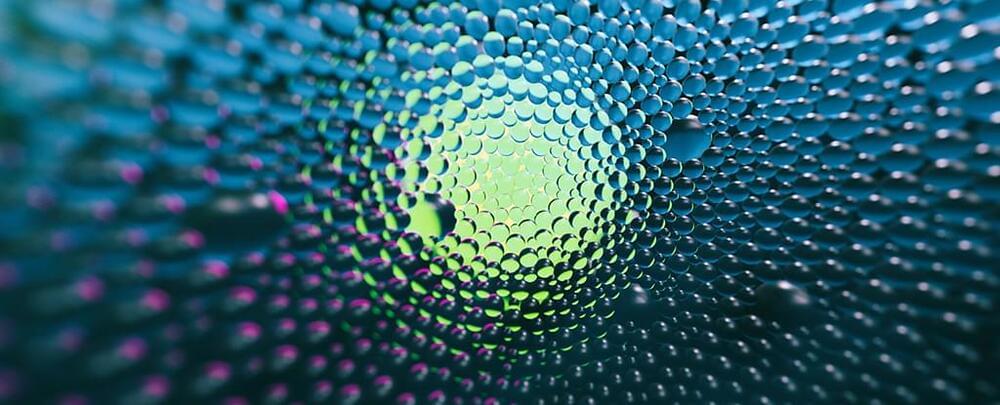The simple story line that ‘Gell-Mann and Zweig invented quarks in 1964 and the quark model was generally accepted after 1968 when deep inelastic electron scattering experiments at SLAC showed that they are real’ contains elements of the truth, but is not true. This paper describes the origins and development of the quark model until it became generally accepted in the mid-1970s, as witnessed by a spectator and some-time participant who joined the field as a graduate student in October 1964. It aims to ensure that the role of Petermann is not overlooked, and Zweig and Bjorken get the recognition they deserve, and to clarify the role of Serber.
Category: particle physics – Page 282


Are We Actually Living in a Multiverse? The Basic Math May Be Wrong
One of the most startling scientific discoveries of recent decades is that physics appears to be fine-tuned for life. This means that for life to be possible, certain numbers in physics had to fall within a certain, very narrow range.
One of the examples of fine-tuning which has most baffled physicists is the strength of dark energy, the force that powers the accelerating expansion of the universe.
If that force had been just a little stronger, matter couldn’t clump together. No two particles would have ever combined, meaning no stars, planets, or any kind of structural complexity, and therefore no life.

LHC physicists can’t save them all
In 2010, Mike Williams traveled from London to Amsterdam for a physics workshop. Everyone there was abuzz with the possibilities—and possible drawbacks—of machine learning, which Williams had recently proposed incorporating into the LHCb experiment. Williams, now a professor of physics and leader of an experimental group at the Massachusetts Institute of Technology, left the workshop motivated to make it work.
LHCb is one of the four main experiments at the Large Hadron Collider at CERN. Every second, inside the detectors for each of those experiments, proton beams cross 40 million times, generating hundreds of millions of proton collisions, each of which produces an array of particles flying off in different directions. Williams wanted to use machine learning to improve LHCb’s trigger system, a set of decision-making algorithms programmed to recognize and save only collisions that display interesting signals—and discard the rest.
Of the 40 million crossings, or events, that happen each second in the ATLAS and CMS detectors—the two largest particle detectors at the LHC—data from only a few thousand are saved, says Tae Min Hong, an associate professor of physics and astronomy at the University of Pittsburgh and a member of the ATLAS collaboration. “Our job in the trigger system is to never throw away anything that could be important,” he says.

Dark Matter Might Be Recycled To Form A Whole Invisible Periodic Table
Our current best understanding of the universe requires the existence of an invisible substance known as dark matter. The exact nature of dark matter (or its actual existence) is still unknown, and there are multiple competing theories to explain the effect of this matter on the Universe. An exciting new one is called Recycled Dark Matter.
The idea behind Recycled Dark Matter is that dark matter is produced in a specific mechanism that researchers have dubbed “recycling” in a paper awaiting peer-review, because dark matter forms twice in the universe, with weird quantum mechanics and a black hole phase in the middle. All of that just a few instants after the beginning of the cosmos.
So, let’s take a journey back about 13.8 billion years. You don’t have to move, because the Big Bang happened everywhere. At the very moment that time as we know it starts ticking, the fundamental forces and the building blocks of particles we know of (the Standard Model) are in equilibrium with the Dark Sector (we know it sounds like a bad fantasy novel location, but bear with).

Scientists find new way to supercharge lasers by a million times
Scientists from the UK and South Korea have discovered a way to create laser pulses 1,000 times stronger than currently possible. Using computer simulations, they have discovered that a new way of compressing the light can drastically increase its intensity to such an extent that it can extract particles from a vacuum. This new technique could open up doors for important discoveries into the very nature of matter.
Uncover the nature of matter
Researchers from the University of Strathclyde, Ulsan National Institute of Science & Technology (UNIST), and Gwangju Institute of Science and Technology (GIST) have proposed a simple idea to revolutionize the next generation of lasers. They suggest using the gradient in the density of plasma, which is fully ionized matter, to cause photons to bunch together. This is similar to the way a group of cars bunches up as they encounter a steep hill. If this technique is successful, it could increase the power of lasers by more than one million times from what is currently achievable.

Physicists Uncover a New State of Matter Hidden in The Quantum World
You’re familiar with the states of matter we encounter daily – such as solid, liquid, and gas – but in more exotic and extreme conditions, new states can appear, and scientists from the US and China found one earlier this year.
They’re calling it the chiral bose-liquid state, and as with every new arrangement of particles we discover, it can tell us more about the fabric and the mechanisms of the Universe around us – and in particular, at the super-small quantum scale.
States of matter describe how particles can interact with one another, giving rise to structures and various ways of behaving. Lock atoms in place, and you have a solid. Allow them to flow, you have a liquid or gas. Force charged partnerships apart, you have a plasma.
Teleportation Will Be Here Sooner Than You Think
Teleportation might just be the next big thing – and no, we’re not talking about sci-fi dreams! Scientists are seriously delving into quantum teleportation, where information about particles is transmitted instantly. It’s currently happening on the teeny-tiny scale, but progress is zooming at warp speed. While teleporting your morning commute might take a bit, the future seems to be knocking at the teleportation door, and it’s saying, “Open up, it’s science!” 🚀🔮
#brightside.
Animation is created by Bright Side.
Music from TheSoul Sound: https://thesoul-sound.com/
Listen to Bright Side on:
Spotify — https://open.spotify.com/show/0hUkPxD34jRLrMrJux4VxV
Apple Podcast — https://podcasts.apple.com/podcast/idhttps-podcasts-apple-co…1554898078
Our Social Media:

Unlocking Fundamental Mysteries: Using Near-Miss Particle Physics to Peer Into Quantum World
In a breakthrough at CERN
Established in 1954 and headquartered in Geneva, Switzerland, CERN is a European research organization that operates the Large Hadron Collider (LHC), the largest particle physics laboratory in the world. Its full name is the European Organization for Nuclear Research (French: Organisation européenne pour la recherche nucléaire) and the CERN acronym comes from the French Conseil Européen pour la Recherche Nucléaire. CERN’s main mission is to study the fundamental structure of the universe through the use of advanced particle accelerators and detectors.